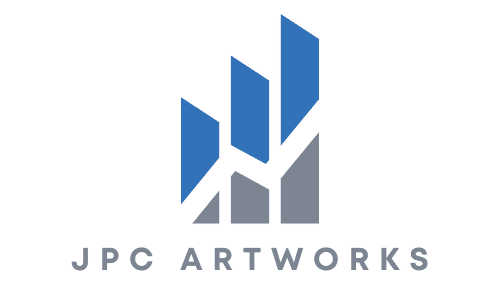How to Foster a Digital Community for Local Artists in the UK?

In the age of the internet, art has found a new and vibrant home in the digital landscape. From online galleries to social media platforms, artists have more avenues than ever to display their work, connect with a global audience, and engage with fellow creatives. However, as the digital space becomes more crowded, there is a growing need for localised online communities that can foster a greater sense of belonging, provide targeted support, and enable meaningful connections. For artists in the UK, such a community can prove instrumental in their creative and professional development.
Building a Digital Platform for Local Artists
The first step in fostering a digital community for local artists is creating an online platform that serves as a hub for the community. This platform can be a website, a social media group, or an app, depending on where your target artists are most active and what kind of interactions you want to facilitate.
Additional reading : How to Optimize Your Home Network Security to Protect Against Cyber Attacks?
This platform should primarily serve two purposes: showcasing the artists’ work and promoting interaction among the community members. It should allow artists to create profiles, post their work, receive feedback, and engage with their audience. Additionally, it should promote active discussions among the artists, facilitating the sharing of ideas, skills and experiences.
To ensure the success of your platform, focus on making it user-friendly, visually appealing, and interactive. Incorporate features like forums, live chats, and comment sections to stimulate interaction. Also, consider including resources such as tutorials, articles, and webinars to aid the artists in their creative process and professional development.
Topic to read : How Is Robotics Being Integrated into Primary Education Curriculums?
Promoting Cultural Engagement and Public Support
A digital community for local artists should not only cater to the artists but also aim to engage the wider public. This public engagement is crucial for promoting local art and culture, encouraging public support, and stimulating the local creative economy.
One way to foster public engagement is through digital exhibitions and events. Artists can showcase their work in digital galleries, participate in online art festivals, or host live-streamed workshops. These events not only expose the artists’ work to a broader audience but also create cultural experiences that the public can participate in and enjoy.
To further increase public support, the platform can facilitate interactions between artists and the public. This could be through public voting for art competitions, crowdfunding for art projects, or forums for the public to share their thoughts and ideas about the local art scene.
Enhancing Artists’ Skills and Professional Development
A digital community should serve as a catalyst for the growth and development of the artists. This entails providing resources and opportunities that can help them hone their skills, understand the art market, and navigate their career paths.
Offering online workshops and tutorials can be an effective way to enhance the artists’ skills. This could range from technical art tutorials to webinars on art marketing and branding. Coupled with a platform where artists can apply what they’ve learned and get feedback, this approach can create a dynamic learning environment.
Similarly, the platform can provide resources on professional development. This could include articles on how to price artworks, advice on creating a compelling portfolio, or even mentorship programs. The goal is to equip the artists with the knowledge and skills they need to succeed in their careers.
Bridging the Gap with Art Organisations and Institutions
Art organisations and institutions play a significant role in the local art scene, and bridging the gap between them and the artists can bring numerous benefits. These organisations can provide funding, opportunities, resources, and advocacy, all of which can elevate the artists’ work and careers.
To facilitate this connection, the digital community can feature profiles of art organisations and institutions, providing information about their mission, programs, and opportunities. The platform can also host virtual events where representatives from these organisations can interact with the artists, answer their questions, and provide guidance.
Moreover, the platform can serve as a medium for artists to apply for grants, residencies, or exhibitions offered by these organisations. By streamlining the application process and providing relevant information, the platform can increase the artists’ access to these opportunities.
Establishing a Supportive and Collaborative Environment
Lastly, fostering a digital community for local artists is about creating a supportive and collaborative environment. Art can often be a solitary endeavour, and having a community where artists can share their struggles, celebrate their wins, and collaborate on projects can make a significant difference.
Creating this environment starts with promoting positive interactions. Encourage artists to provide constructive feedback on each other’s work, celebrate each other’s achievements, and collaborate on projects. This could be facilitated through features like peer-review sections, newsfeeds highlighting artists’ achievements, and project collaboration boards.
In all, fostering a digital community for local artists in the UK is a comprehensive task. However, by building a dedicated platform, promoting cultural engagement, enhancing artists’ skills, bridging the gap with art organisations, and establishing a supportive environment, you can create a thriving digital community that supports the local art scene and enriches the cultural life of the UK.
Building Relationships with Local Authorities
A key aspect in fostering a digital community for local artists in the UK is building solid relationships with local authorities. Many local governments have established art councils that are actively involved in promoting public art and supporting local artists. By collaborating with these councils, a digital platform can have a more significant impact on the local art scene.
Local authorities can provide valuable resources and support, such as funding for art projects and programmes, promotion of local art events, and policy advocacy for artists’ rights. Furthermore, local authorities often have direct connections with the broader community, which can be leveraged to increase public engagement in the arts.
The digital platform should include a dedicated section for local art councils and authorities. This section should feature information about their missions, programmes, and support options. It should also provide a direct channel for artists to reach out to these councils and for the councils to share updates and opportunities with the community.
At the same time, the platform should actively seek collaboration with local authorities. This can include joint events, shared campaigns, or even partnerships in developing art programmes. The goal is to create a synergistic relationship that benefits the artists, the authorities, and the wider community.
Nurturing Digital Skills and Engagement for Young Artists
One of the challenges facing local artists in the UK is the digital divide, particularly among young people who are just starting their artistic journey. To address this, the digital platform should take deliberate steps to nurture digital skills and engagement among young artists.
The platform should offer resources that help young artists understand and leverage digital culture. This could be in the form of tutorials on using social media to promote art, webinars on digital art techniques, or articles on the impact of digital technology on the art world.
In addition, the platform should make an effort to engage young artists. This could be through competitions aimed at young artists, mentorship programmes connecting them with experienced artists, or features that allow them to share and discuss their work with peers.
Lastly, the platform should actively promote digital inclusivity. This means ensuring that the platform is accessible and user-friendly for all, regardless of their digital proficiency. It also means advocating for digital access and literacy, to ensure that no artist is left behind in the digital age.
Conclusion
In conclusion, fostering a digital community for local artists in the UK is a multifaceted and ongoing process. It involves building a dedicated platform, engaging both artists and the public, enhancing artists’ skills and professional development, bridging the gap with art organisations and local authorities, and creating a supportive and inclusive environment.
As we embrace the potential of the digital age, it’s crucial that we also make concerted efforts to promote digital inclusivity and diversity in the arts sector. The goal should not just be about moving the art online, but about harnessing digital technology to create more equitable, vibrant, and resilient art ecosystems.
Digital communities can play a crucial role in reshaping the public realm of art. They can help artists to share their work on Facebook, Twitter or other social media platforms, and reach a global audience. Moreover, they can build bridges between artists, local communities, the cultural sector, and the creative industries, fostering a greater sense of unity and shared purpose.
Finally, as we move forward, we must recognise that art has always been about pushing boundaries and reimagining possibilities. Therefore, as we foster digital communities for local artists, let’s also foster a spirit of creativity, innovation, and transformation in the way we approach the art world. After all, art is not just about creating beautiful things, but about creating a beautiful world.
